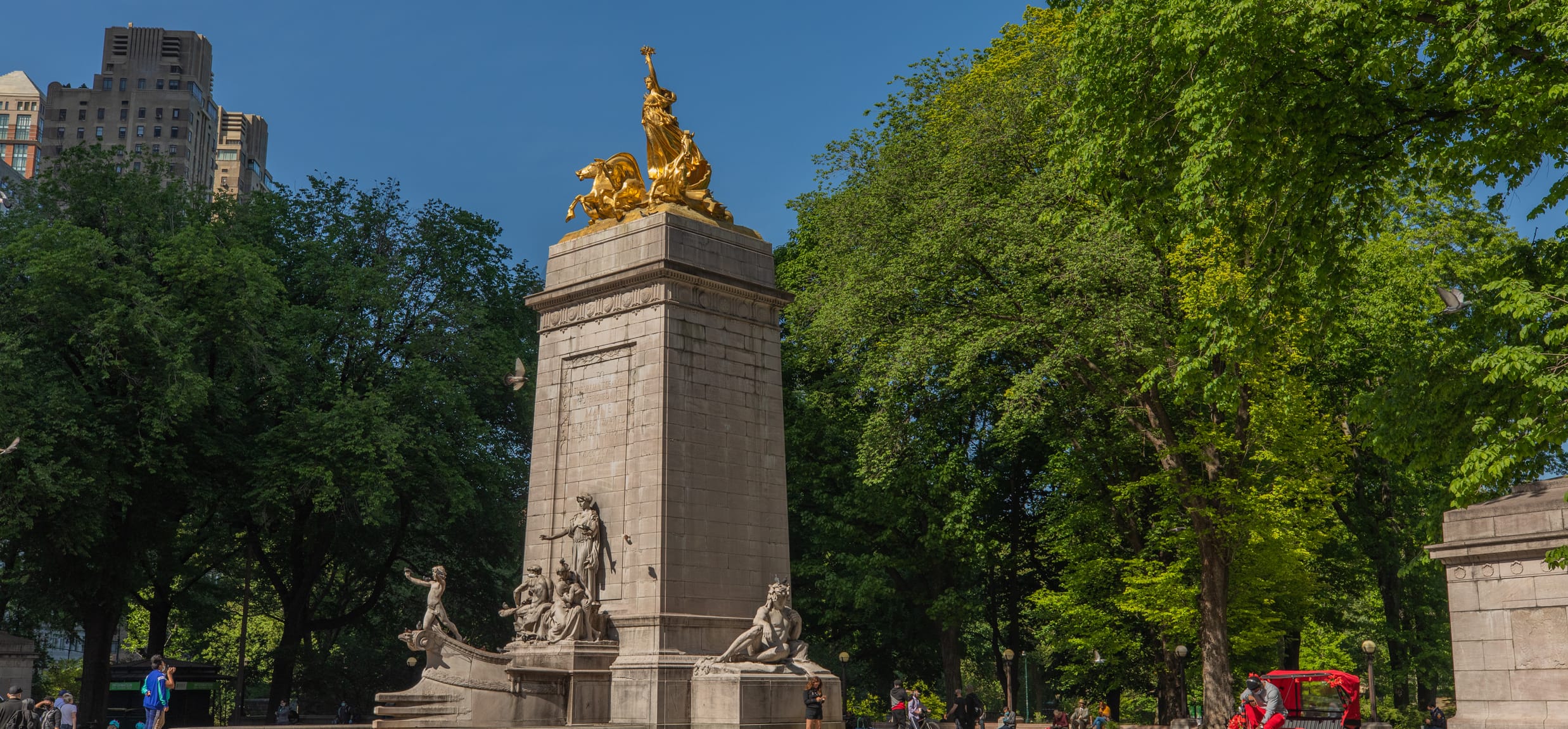Maine Monument

At the southwestern entrance to Central Park stands the 57-foot-high U.S.S. Maine National Monument, which honors the American sailors lost when the Navy vessel, the U.S.S. Maine, exploded in 1898 and sank in Havana harbor in Cuba.
Days after the tragedy, newspaper tycoon William Randolph Hearst started a campaign for a memorial to honor the lost sailors. He used his newspaper, the New York Morning Journal, as a platform for the effort. Large and small donations poured in from across the City.
The complex symbolism of the monument, somewhat difficult to read now, reflected the United States’ aspirations of political dominance during the early 20th century. The Italian-American sculptor Attilio Piccirilli, of the renowned sculpture firm Piccirilli Brothers, created all of the monument’s figurative sculptures and other sculptural detail. H. Van Buren Magonigle was the architect. At the top of the monument, the eye-catching gilded female figure represents Columbia or the Americas. She stands triumphantly, with her arm raised in her chariot led by three hippocampi, half-horse, half-seahorse mythical creatures that often represent power. At the foot of the massive pedestal are groups of figures entitled Courage Awaiting the Flight of Peace and Fortitude Supporting the Feeble and Justice Receiving Back the Sword Entrusted to War. On each side of the pedestal are reclining male figures; the younger one represents the Atlantic Ocean and the elder the Pacific Ocean.
The imposing pedestal and allegorical figures relate little of the tragedy of the U.S.S. Maine. The names of those who died are inscribed above the figures representing the oceans.
Like the nearby monument to Columbus and the plaza of Latin American liberators at the Sixth Avenue entrance, the Maine monument represents a popular view of American national strength during the era it was dedicated.
The monument at the southeast entrance to the Park, the Pulitzer Fountain completed in 1916 and sponsored by Joseph Pulitzer, is also the legacy of an ambitious newspaperman. Pulitzer and Hearst were fierce rivals and these monuments in such prominent locations also suggest the power of the media during this period.

